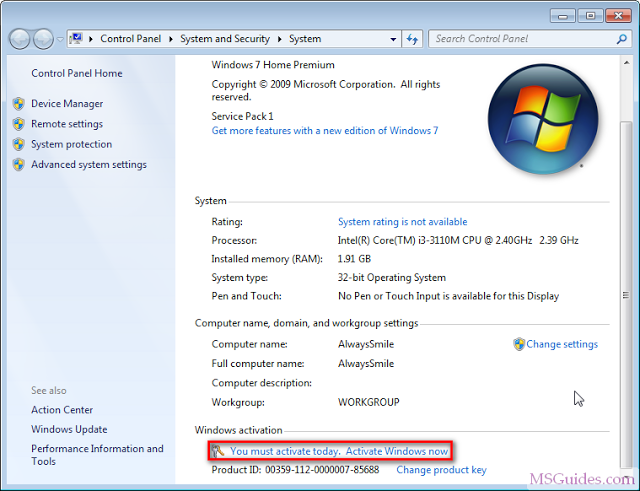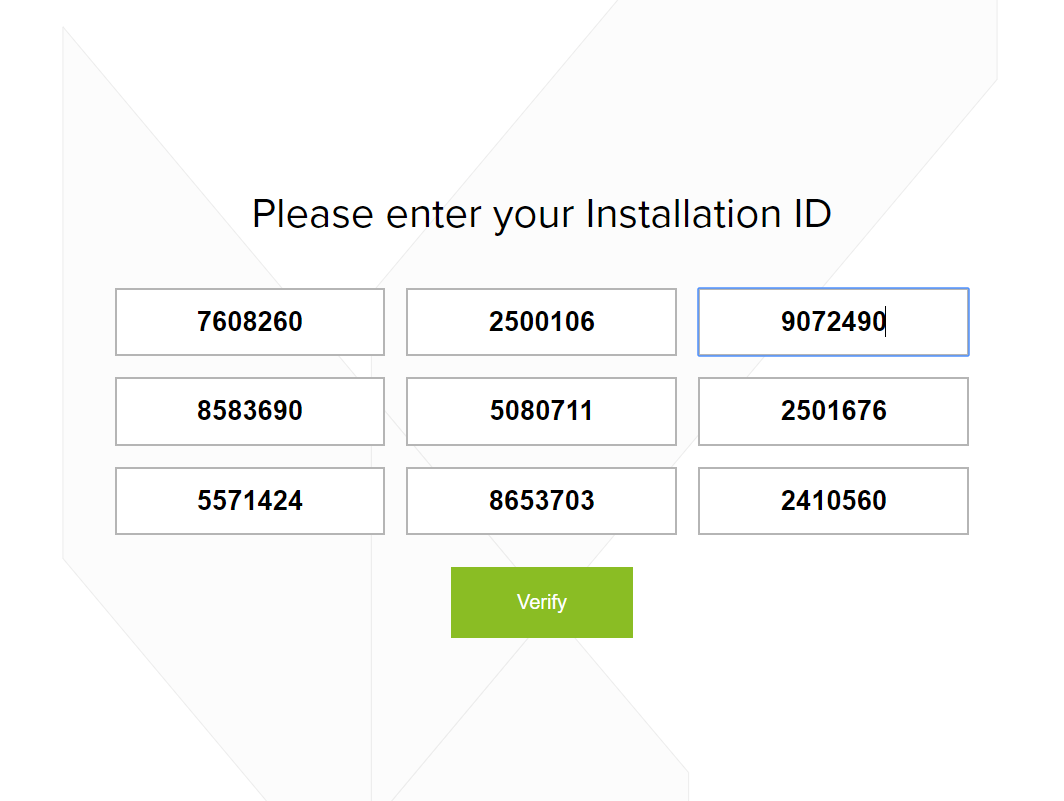-->
Applies to:Volume licensed versions of Office 2019 and Office 2016, including Project and Visio
Call the Microsoft Licensing Activation Center for your region. Provide the installation ID and make note of the confirmation ID that you receive. At the elevated command prompt, type slmgr /atp and press Enter. On activation, a dialog box shows a confirmation message. Call the Microsoft Product Activation Center, provide the installation ID you received above, and you’ll be given an activation ID if everything checks out. This allows you to activate Windows systems without Internet connections. To enter the confirmation ID you’ve received for offline activation, run the following command.
To activate volume licensed versions of Office, including Project and Visio, you must have a Key Management Service (KMS) host computer. You can configure a Windows Server computer to be a KMS host computer by installing the Volume Activation Services role and then running the Volume Activation Tools wizard.
To enable the KMS host computer to activate Office, you must install the Office Volume License Pack and enter your KMS key on the KMS host computer. Then, you need to activate the KMS key over the internet or by telephone.
If you have a KMS host computer configured to activate Windows, you can configure that same KMS host computer to activate Office. You can also configure a KMS host computer to activate multiple versions of Office, such as Office 2019 and Office 2016. In these cases, the KMS host computer must be running an operating system that supports KMS for each of the versions of Office that you want to activate. You'll also need to install the Office Volume License Pack for each version of Office on the KMS host computer and activate a KMS host key for each version of Office.
Office supports KMS host computers running on the following operating systems, depending on which version of Office is being activated by KMS:
- Office 2019: At least Windows Server 2012 or at least Windows 8.1 (volume editions)
- Office 2016: At least Windows Server 2008 R2 or at least Windows 7 Service Pack 1 (volume editions)
You can download the appropriate Office Volume License Pack from the Microsoft Download Center: Office 2019, Office 2016. To get the KMS key, sign in to the Volume Licensing Service Center (VLSC) and download the KMS key for each product and version of Office that you want KMS to activate.
Note
If you are setting up KMS on Windows 7 volume license edition or Windows Server 2008 R2, you must first install a patch as described in Microsoft Knowledge Base article 2757817. This patch allows the KMS host computer to activate Office clients that run on Windows 8 and Windows Server 2012.
Note
- Support for Windows 7 and Windows Server 2008 R2 ended on January 14, 2020.
- Support for Windows 8 ended on January 12, 2016.
Configure the KMS host computer
To configure the KMS host computer to activate Office, you must be a member of the Administrators group on the KMS host computer.
If your KMS host computer has internet access, do the following steps:
- Sign in to the Volume Licensing Service Center (VLSC) and download the KMS key for each product and version of Office that you want KMS to activate.
- On the KMS host computer, download the appropriate Office Volume License Pack from the Microsoft Download Center: Office 2019, Office 2016.
- Run the Office Volume License Pack executable file. Running the executable file will install the Office Volume License Pack on the KMS host computer and then opens the Volume Activation Tools wizard.
- Follow the steps in the Volume Activation Tools wizard. Enter your KMS key when prompted.
- If you have a firewall, make sure port 1688 is open to allow the KMS host service through the firewall.
- Go to Control Panel > System and Security > Windows Firewall.
- Click the Allow an app or feature through Windows Firewall link.
- Click the Change Settings button.
- Select the check box for Key Management Service and then choose OK.
If your KMS host computer doesn't have internet access, you can activate it by telephone.
- From an elevated command prompt, go to the Windowssystem32 folder, and then run the following command:
Replace ACTIVATIONID with the Activation ID for your version of Office. The Activation ID for Office 2019 is 70512334-47B4-44DB-A233-BE5EA33B914C, and the 2016 Activation ID for Office 2016 is 98EBFE73-2084-4C97-932C-C0CD1643BEA7.
The result of running this command is a 36-digit installation ID. Paste the installation ID number into Notepad, and then break it up into six groups of six numbers.

- At the command line, run the following command:
This command launches the Windows phone activation wizard and it will display a telephone number.
After you've obtained the telephone number, cancel the wizard. You can ignore the activation ID displayed by the wizard. It's for Windows.
Call the telephone number. At each prompt, enter a group of six numbers. This 36-digit number is the installation ID that you obtained in step 1.
When you hear the response, write down the numbers. These numbers are your confirmation ID.
At the command line, run the following command:
Replace CONFIRMATIONID with the 48-digit confirmation ID that you received over the telephone.
Replace ACTIVATIONID with the Activation ID for your version of Office. The Activation ID for Office 2019 is 70512334-47B4-44DB-A233-BE5EA33B914C, and the 2016 Activation ID for Office 2016 is 98EBFE73-2084-4C97-932C-C0CD1643BEA7.
- You should see a message that the confirmation ID was successfully deposited.
Verify activations by the KMS host computer

After you set up the KMS host computer, KMS clients send requests for activation and increment the current count of activations. The current count must be 5 or more before KMS clients are activated. The maximum current count is double the activation threshold, or 10. You can also check the KMS log in the Applications and Services Logs folder for event ID 12290, the ID for KMS-related activity. The KMS log records activation requests from KMS clients. Each event displays the name of the computer and the time stamp of each activation request.
Verify the KMS key is successfully installed and activated
From an elevated command prompt on the KMS host computer, run the following command:
To view information only for Office 2019, specify the Activation ID after the /dlv parameter. For example:
The following text is an example of the output. The line that says: 'License Status: Licensed' indicates that your KMS host computer is successfully activated.
Related topics
View Activation, License, and Expiration Date Information
To display very basic license and activation information about the current system, run the following command. This command tells you the edition of Windows, part of the product key so you can identify it, and whether the system is activated.
Windows 10 Activation Confirmation Id
To display more detailed license information–including the activation ID, installation ID, and other details–run the following command:
View the License Expiration Date
To display the expiration date of the current license, run the following command. This is only useful for Windows system activated from an organization’s KMS server, as retail licenses and multiple activation keys result in a perpetual license that won’t expire. If you haven’t provided a product key at all, it’ll give you an error message.
Uninstall the Product Key
You can remove the product key from your current Windows system with Slmgr. After you run the below command and restart your computer, the Windows system won’t have a product key and will be in an unactivated, unlicensed state.

If you installed Windows from a retail license and would like to use that license on another computer, this allows you to remove the license. It could also be useful if you’re giving that computer away to someone else. However, most Windows licenses are tied to the computer they came with–unless you purchased a boxed copy.
To remove uninstall the current product key, run the following command and then restart your computer:
Windows also stores the product key in the registry, as it’s sometimes necessary for the key to be in the registry when setting up the computer. If you’ve uninstalled the product key, you should run the below command to ensure it’s removed from the registry as well. This will ensure people who use the computer in the future can’t grab the product key.
Running this command alone won’t uninstall your product key. It’ll remove it from the registry so programs can’t access it from there, but your Windows system will remain licensed unless you run the above command to actually uninstall the product key. This option is really designed to prevent the key from being stolen by malware, if malware running on the current system gains access to the registry.
Set or Change the Product Key
You can use slmgr.vbs to enter a new product key. If the Windows system already has a product key, using the below command will silently replace the old product key with the one you provide.
Run the following command to replace the product key, replacing #####-#####-#####-#####-##### with the product key. The command will check the product key you enter to ensure it’s valid before using it. Microsoft advises you restart the computer after running this command.
You can also change your product key from the Activation screen in the Settings app, but this command lets you do it from the command line.
Activate Windows Online
To force Windows to attempt an online activation, run the following command. If you’re using a retail edition of Windows, this will force Windows to attempt online activation with Microsoft’s servers. If the system is set up to use a KMS activation server, it will instead attempt activation with the KMS server on the local network. This command can be useful if Windows didn’t activate due to a connection or server problem and you want to force it to retry.
Activate Windows Offline

Windows 7 Confirmation Id Generator
Slmgr also allows you to perform an offline activation. To get an installation ID for offline activation, run the following command:
You’ll now need to get a a confirmation ID you can use to activate the system over the phone. Call the Microsoft Product Activation Center, provide the installation ID you received above, and you’ll be given an activation ID if everything checks out. This allows you to activate Windows systems without Internet connections.
Confirmation Id Windows Xp
To enter the confirmation ID you’ve received for offline activation, run the following command. Replace “ACTIVATIONID” with the activation ID you’ve received.
Windows 7 Activation Crack
Once you’re done, you can use the slmgr.vbs /dli or slmgr.vbs /dlv commands to confirm you’re activated.
Confirmation Id Windows 7 Activation Key
This can generally be done from the Activation screen in the Settings app if your PC isn’t activated–you don’t have to use the command if you’d rather use the graphical interface.